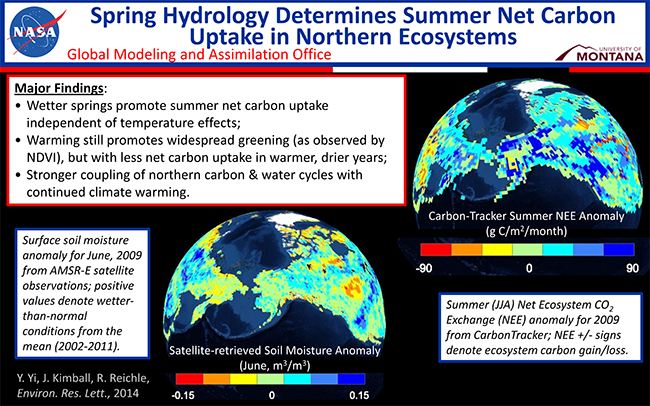Spring Hydrology Determines Summer Net Carbon Uptake in Northern Ecosystems
Satellite measurements indicate that plant growth in northern ecosystems and seasonal carbon dioxide (CO2) exchange with the atmosphere increased over the past decades. Most of these changes have been attributed to strong warming trends in the northern high latitudes (≥ 50° northern latitude).
Scientists at the University of Montana and the NASA Global Modeling and Assimilation Office collaborated to analyze the year-to-year variation of net carbon uptake during summer. Net carbon uptake was derived from atmospheric CO2 measurements and satellite vegetation measurements and related to surface meteorology from regional observational records. A key finding of the research is that increases in spring precipitation and snow pack promote summer net carbon uptake of northern ecosystems independent of air temperature effects.
Further analysis of tower-based CO2 flux measurements indicates that summer net carbon uptake co-varies with early growing-season near-surface soil moisture, which is also strongly affected by spring precipitation and snow pack based on an analysis of satellite observations of soil moisture. This is attributed to the impact of spring hydrology on soil respiration in relatively wet, high-latitude ecosystems.
The results document the important role of spring hydrology in determining summer net carbon uptake and contrast with prevailing assumptions of dominant cold temperature limitations to high-latitude ecosystems. The results further indicate potentially stronger coupling of the water and carbon cycles at high latitudes with continued regional warming trends.
References
Yi, Y., J. S. Kimball, and R. H. Reichle (2014), Spring Hydrology Determines Summer Net Carbon Uptake in Northern Ecosystems, Environmental Research Letters, 9, 064003, doi:10.1088/1748-9326/9/6/064003.


